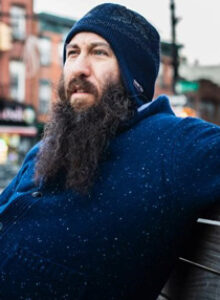Youth mental health is a critically important topic that seems to be having a much-needed moment in the spotlight – like here in New York, where Gov. Kathy Hochul announced a $1 billion investment in a plan that may well transform the future of mental health in this state.

Even Hollywood is getting in on the conversation. This summer’s animated film Inside Out 2 will continue the premise of Pixar’s 2015 hit, which takes place inside the mind of a girl named Riley. Her emotions are personified as characters (Joy, Sadness, Fear, Anger, and Disgust), perfectly depicting how our minds react in social situations and create, process, and alter memories. The sequel will focus on Riley’s transition into the tumultuous teenage years, exploring the complexities of puberty and anxiety from the perspective of her inner emotions.
Already, Inside Out 2 is becoming a catalyst for much-needed, long-overdue conversations about youth mental health. As a fan of the first film, I love the idea of leveraging the sequel’s entertaining narrative format to encourage dialogue that fosters greater empathy for young people coping with mental health challenges.
But as a family peer advocate and the neurodivergent dad of a young adult on the autism spectrum, I can’t help but recognize that the current public discourse around youth mental health continues to overlook an important sub-population: teens with intellectual and developmental disabilities, like my son.
For neurodivergent teens and their families, the multilayered challenges of the teenage years aren’t represented in mainstream conversations about youth mental health. Heck, they’re barely talked about outside of the autism advocacy community at all. Yet they’re extraordinarily widespread – and, for many families, seemingly insurmountable.
It’s common for autistic individuals to be diagnosed with concurrent mental health issues, like depression and suicidal tendencies. In fact, statistics show that as many as 80% of autistic people carry at least one comorbid psychiatric diagnosis, like attention-deficit/hyperactivity disorder (ADHD), obsessive-compulsive disorder (OCD), or anxiety disorders. Of that population, 40% are estimated to experience two or more such diagnoses.
Statistics upon statistics underscore this reality. One study reports that autistic youth are nine times more likely to present to the emergency department for psychiatric reasons than their neurotypical peers – and that number has almost certainly increased since the study’s publication a decade ago.
Autistic individuals and their families continue to face massive and seemingly insurmountable challenges as they try to access much-needed mental health care in community settings. For example, finding a mental health provider who is equipped to work with autistic teens is virtually impossible. Youth who experience autistic meltdowns end up in psychiatric wards that can’t treat their unique needs (evidenced by my own family’s lived experiences).
To confuse matters further, in New York State, there’s seeming confusion over which government system is responsible for providing mental health services to the autistic population. Case management is separated between comorbidities, requiring the impossible choice of attaining services from the Office of Mental Health or the Office for People with Developmental Disabilities – when, in actuality, families need help from both.
However, different offices mean systems, which, of course, means different case managers, which leads to massive resource duplication. This suggests that case managers’ purviews are distressingly limited in scope, never enabling them to provide whole-person care. And all the while, medical systems buckle under the weight of all the progress notes – and all the lack of actual progress.
Simply put, the current systems aren’t set up to manage the comorbidities and related challenges that so commonly accompany autism. For neurodivergent teens, these gaps in care are nothing short of life-threatening.
Autistic youth aren’t just disproportionately affected by mental health diagnoses; they’re also at higher risk for factors related to suicidal thoughts and behaviors and non-suicidal self-injury suicidality. Bullying is near the top of the list, with statistics showing that bullied youth are, in general, at a higher risk for suicidal thoughts and behaviors – and children with autism are far more likely to be bullied than their neurotypical peers.
There’s also the fact that when autistic teens face mental health challenges, they’re often less able than their neurotypical peers to verbalize what they’re going through, which makes their challenges significantly worse.
These are experiences that my family and I know all too well – but we also understand that it is not our son or his diagnoses that are the problem. The problem is that the very systems designed to help him are still not equipped to do so.
Our systems must be structured to distinguish between neurotypical and neurodivergent needs – and to accommodate them accordingly. As Lisa Morgan Med, CAS, explains, “[Autistic people] think, communicate, and experience the world differently, so they need support that meets their needs, not standardized, evidence-based, best practice support for non-autistic people.”
This means understanding that autistic youth are often unable to express themselves in the way neurotypical kids are and recognizing that autistic meltdowns are usually the result of unmet needs.
It meant adapting our existing teen mental health resources – including suicide prevention resources and screening and intervention tools – to accommodate the evidence-based mental health needs of neurodivergent populations.
It means integrating safety planning and coping strategies, especially following psychiatric discharges, into comprehensive mental health care strategies for neurodivergent youth.
It also means that general psychiatric units need to be able to effectively treat autistic children and that autism education must be fully and intentionally integrated into mental health providers’ training requirements.
Addressing these challenges will require a shift in discourse that moves away from siloed systems and fragmented services, instead recognizing the intersection of neurodiversity and mental health and prioritizing comorbidities. Labels are for insurance companies, not humans.
Right now, there is hope on the horizon.
Earlier this year, for example, the federal government put out a call for public comments to enable the Interagency Autism Coordinating Committee (IACC) to better identify physical and mental health conditions that commonly co-occur with autism. In early March, at the Families Together in New York State Mental Health Townhall, I had the opportunity to ask Commissioner Ann Marie Sullivan about adapting existing mental health resources for the needs of the neurodivergent population. Her responses were positive and productive, acknowledging that this area is ripe for improvement and indicating an openness to change.
Still, there’s a long way yet to go, and the moment is urgent. This is a critical, collective challenge that calls for the commitment and work of self-advocates, healthcare professionals, lawmakers, and caregivers/families all working together – and the outcomes will define the mental health of a generation.
Simcha Weinstein is a renowned author and advocate. He has been featured on CNN and NPR and profiled in the New York Times, Miami Herald, and London Guardian. He is also a syndicated columnist for Tablet Magazine, Condé Nast, and more. He is the chair of Religious Affairs at Pratt Institute and has been dubbed “New York’s Hippest Rabbi” by PBS. He is also the DEI and community engagement coordinator at Families Together in NYS, founder of the Jewish Autism Network, and the regional lead for NYADD.







